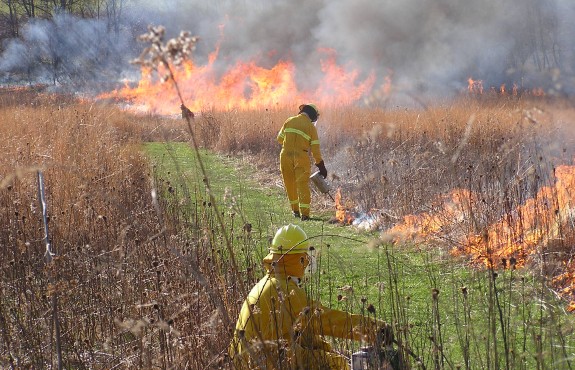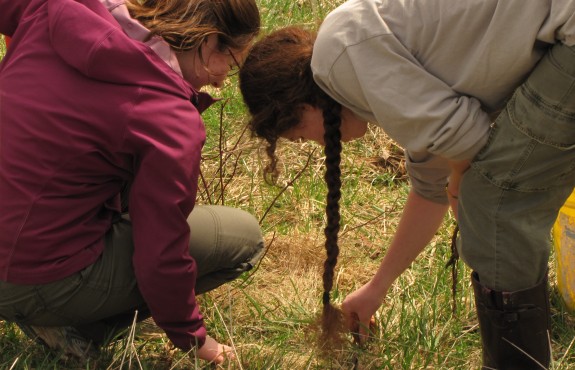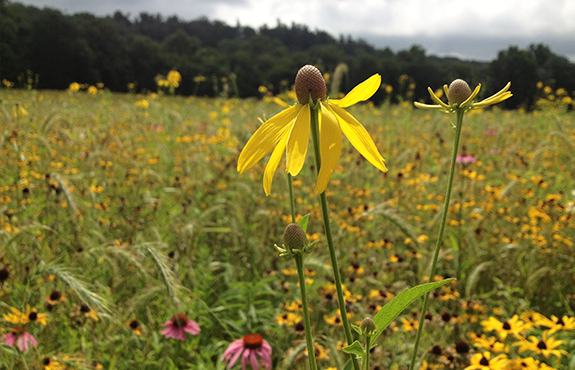Conservation
The Brown Family Environmental Center is dedicated to the conservation of the natural diversity and cultural heritage of the Kokosing River Valley. Our efforts seek to protect sensitive habitat, restore areas impacted by human activity and to guide successional areas towards their apex forms. Myriad species of plants and animals exist at the BFEC. We aim not only to protect them but to add to their diversity whenever possible.
Land Management
At the BFEC, we work to maintain a number of Kokosing River Valley habitat types:
-
Riparian Corridors: Along the banks of Wolf Run Creek and the Kokosing River, we maintain forested buffer to reduce the impacts of runoff. Additionally, we work hard to reduce the impact of invasive plant species as much as possible. Invasive plants are perhaps the tallest hurdle we have to face in terms of maintaining a diverse, historically natural landscape.
-
Wetland Areas: Due to the sensitive nature of wetlands, we limit access to research and maintenance groups in all wetland areas except the Givens' Grove Boardwalk.
-
Woodland Areas: Our woodland management centers around invasive plant removal. As you explore the BFEC, you will notice the scope of the challenge we face. Our efforts are generally focused along trail corridors or in areas where sensitive native plant species are at risk of being pushed out.
-
Prairie Units: In almost all of Ohio, woodland is the apex habitat type. That being said, prairie is an important habitat type for a number of wildlife species. To preserve the integrity of our prairie units, we conduct controlled burns every spring. This helps to recharge the soil and eliminate woody plants that may take root over the summer and fall.
- Oldfield: In areas recently used for agriculture, we have the chance to actively restore habitat types. Since the center was dedicated, over 10,000 trees of over 50 species have been planted in these successional areas. We carefully monitor for invasive species in order to address any issues before they get to the desperate levels we face in other parts of the preserve.
- Agricultural Areas: We work with agricultural tenants to ensure best practices on the sections of the BFEC still leased for grazing or corn/soy production. In our grazing allotment, we worked with the US Fish and Wildlife Service to exclude and reforest a wide buffer on either side of a drainage that empties into Wolf Run Creek.


